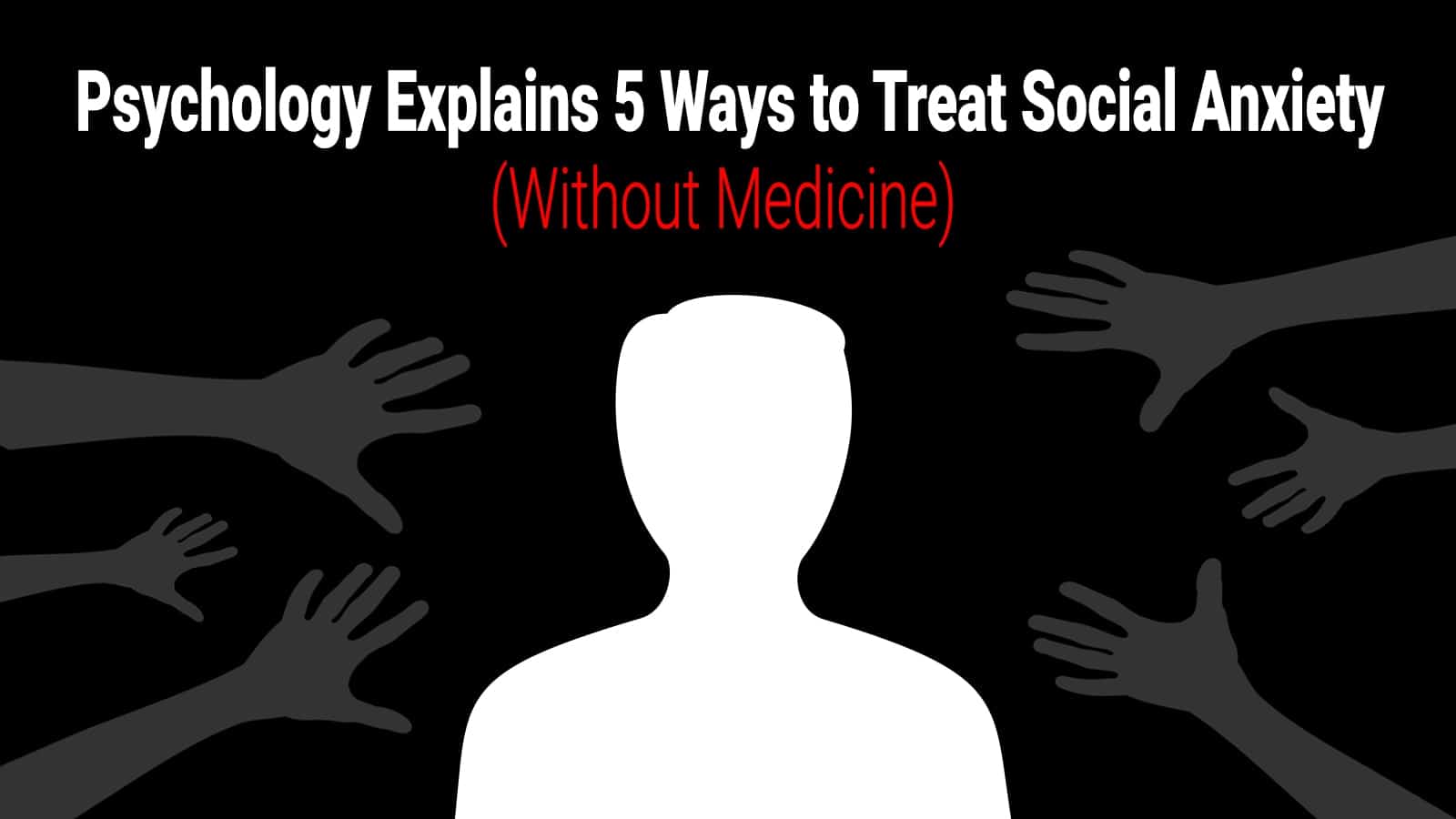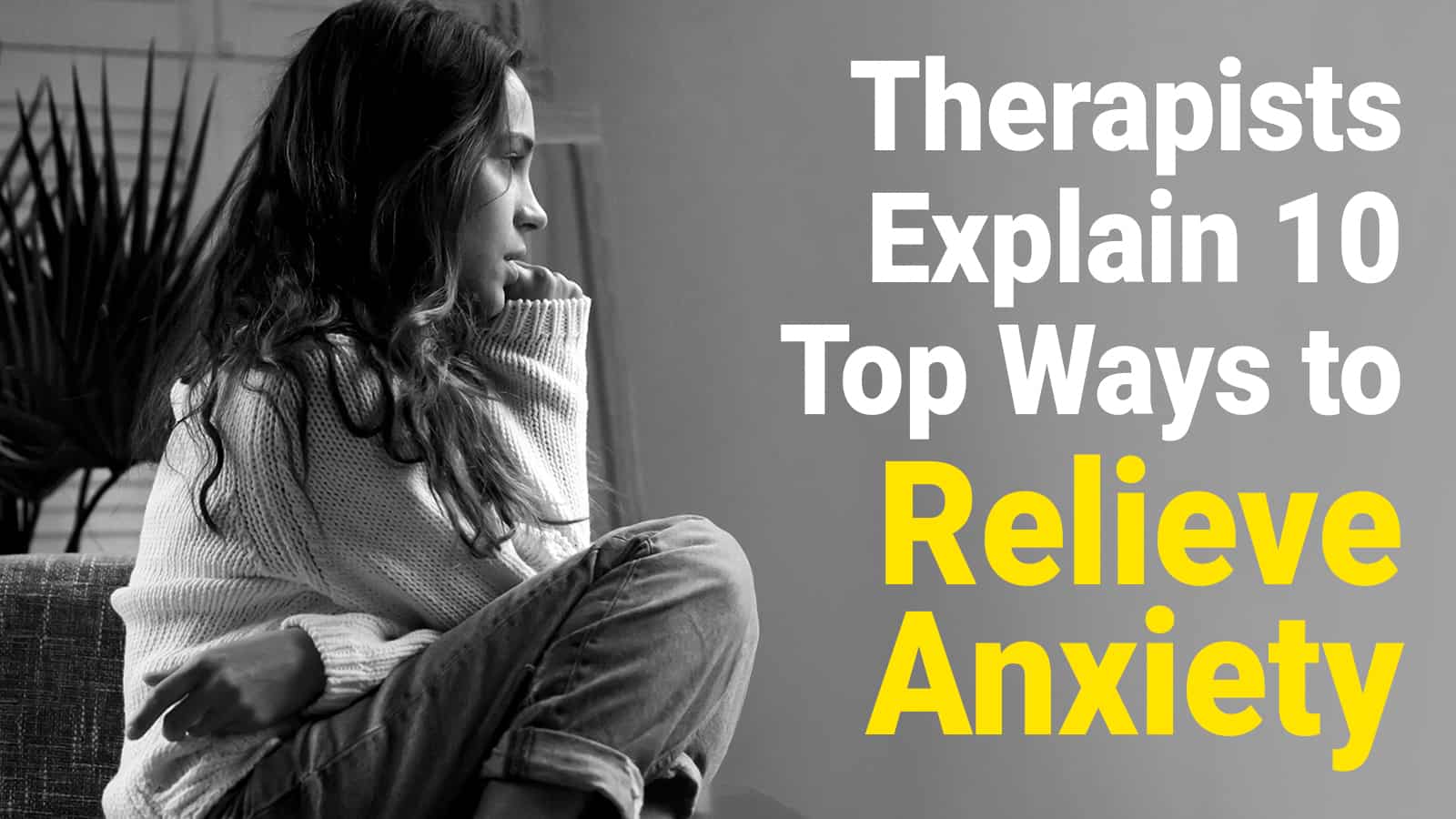Struggling with social anxiety? Looking for a way to take the edge off normal social interactions? You’ll find thousands of tips, tricks, and techniques to sort through on the worldwide web, all promising a quick fix to the anxieties that plague you. But if you want real results, you’ll want to start with those which have been thoroughly researched, explored, and found worthwhile by professionals.
To make it easier to start improving your condition, we’re focusing today on those techniques and tactics you can implement on your own, without much or any outside help. Professional counseling and/or medication can of course prove very valuable in dealing with anxiety and other behavioral health problems. The following, however, are techniques you can begin implementing immediately.
Social Anxiety Therapy Techniques
Exercise
Exercise is often the first recommendation for improving your life. You’ll receive this advice from any doctor, therapist, psychiatrist, or life coach for one reason: it works. While the exact level of improvement you see by treating anxiety with exercise will vary, depending on the type of anxiety you face, you’ll almost certainly see some level of improvement.
Most studies focused on mental health have noted improvements primarily from aerobic exercise, such as running, biking, swimming, dancing, gardening, etc. While you’ll likely see benefits from anaerobic exercise such as weight lifting, sprinting, and other intense physical activity, your best choices are traditional aerobic exercises.
There are a few ways exercise works to improve anxiety in social situations.
At the simplest level, it’s about brain chemistry; exercising triggers the release of numerous chemicals that work to elevate mood, reduce inflammation, bolster your immune system, neutralize stress, and more.
But the purely physiological benefits of exercise aren’t the only reason fitness is a key technique for controlling social anxiety. Research also indicates a few secondary benefits. For instance, you can bolster your confidence by setting and achieving fitness goals. Additionally, you create shared points of reference you can use to navigate social interactions. Finally, you may find it easier to engage other people while distracted by exercise, such as in a fitness class or hobby group.
For the chemical benefits, regular vigorous exercise will show the greatest benefits, as with the other benefits of exercise. Just make sure to avoid the trap of overtraining in your desperation for relief from social anxiety; if you start interfering with sleep quality, hurting yourself, and producing stress hormones because you’re trying to exercise too hard too fast, you’ll undo any benefits you may have earned from your efforts.
Cognitive behavioral therapy
Cognitive behavioral therapy or CBT remains a favorite choice for managing anxiety. This is true whether you’re receiving guided therapy with a professional or developing the techniques on your own. Research shows that even self-taught CBT strategies can have a drastic effect on your response to the feedback loops and mind states that drive social anxiety.
Much of CBT rests in the process of logically evaluating your feelings when anxiety hits (or depression, or anger, in other conditions). A classic example of a trigger for anxiety would be public speaking. CBT techniques for dealing with anxiety would include asking yourself a series of logical questions:
What are you afraid of happening, and how likely is it?
- This is quite often all you’ll need to escape your concerns; you may immediately feel that laid out logically, the consequences for a speech gone poorly aren’t so bad, or the bad outcomes aren’t at all likely.
What are the best case and likeliest outcomes?
- Reminding yourself of the other possible outcomes of giving your speech is the next logical step with CBT techniques. Extreme outcomes are rare in life, and thinking about the broad spectrum of possibilities can help immensely.
How often has this negative prediction come true in the past?
- Realistically comparing your current worry to your past worries can be valuable as well, helping put that dread of social disaster into context.
If it did happen, or does happen, how would you cope with it?
- Social anxiety, and other forms of anxiety and phobia, often lead us to think about the single worst moment of the potential worst outcomes. Thinking past that point, to what it really means for your life, is valuable.
Is worrying about this helpful?
- Worrying isn’t a useless thing to be ashamed of, but it can get in the way of living. Accepting your worries and making good use of them where necessary can make them a tool, rather than a dominating force in your life.
This is only a small example of what CBT’s full range of techniques encompasses, of course. Other CBT techniques include identifying warnings that you’re about to experience an attack of social anxiety. It also involves spotting the physical and mental flags so you can stop your mind before it starts constructing nightmares for you.
The key benefit of CBT isn’t necessarily in applying logic to your problems, as that won’t always help; it’s about breaking the loop so you don’t feel worse and worse over time. When social anxiety hits, it often pulls you into tight spirals of worry about the single worst potential moment in the worst case scenario. CBT gives you the tools to escape the loop and think about your situation with your full faculties.
Mindfulness techniques
There are any number of related techniques for controlling your self-awareness, and all of them offer benefits in managing anxiety. This may seem counter-intuitive if your anxiety tends to manifest as a crippling over-awareness. But similarly to CBT, and in many ways overlapping with its techniques, mindfulness is about controlling the racing thoughts that make you anxious in social situations.
This encompasses a number of techniques. Mindful meditation is perhaps the most popular technique for anxiety sufferers. It has an emphasis on letting go of goals—at least for a moment. Instead, you focus on contentment and awareness in the moment. The closely related field of self-hypnosis offers similar benefits. From a biological standpoint it may function the same, yet it focuses on achieving goals.
Looking at specific techniques, there’s often a focus on redirecting and neutralizing the negative thought patterns associated with anxiety and related ailments. For example, a mindfulness practitioner may recognize anxious patterns and then stop and concentrate exclusively on the sensation of feet pressing against the ground. Or they might focus on breathing, or on the sensations at their fingertips. In other words, they put energy into a combination of visualization and physical feedback as a time-out from anxiety.
Relaxation techniques
Social phobias and anxieties, like all forms of anxiety, can be greatly managed through simple relaxation.
Relaxation techniques encompass a broad selection of relaxing activities, not all of which are as dramatic and obvious as the others. Deep tissue or therapeutic massage, aromatherapy, deep breathing techniques, progressive relaxation, even sitting in a comfy room without interruptions; all of these show benefits for the symptoms of anxiety.
The key here isn’t any particular magic bullet for anxiety hidden in any one of these techniques; rather, you’ll find a broad benefit of relaxation for people experiencing anxiety disorders—social anxiety included.
Exposure therapy
This is likely the scariest technique for dealing with most phobias, anxieties, and fears; it is also one of the simplest to implement and see benefits from. Exposure therapy for anxiety continues to be the favored approach to anxiety in clinical settings, especially in combination with CBT, thanks to ease of implementation, efficacy, and efficiency.
Again, comparing the reality of experience against the image in our minds is a key component of managing anxiety. Exposure therapy seeks to create a wealth of experience to draw upon in making these assessments. You can accomplish this by repeated exposure to the perceived threat in a controlled environment.
This might include exercises such as asking dozens of strangers on the street for their phone numbers. It may simply mean introducing yourself to people and shaking hands. Or it could mean calling up businesses in the phone book and asking questions. The point is to put yourself in a stressful environment, but one where failure doesn’t matter. You wait for the anxiety to tire itself out in the face of mundane reality.
This comes with caveats. Doing too much too soon can be counter-productive; you want to be pushed to an uncomfortable place, not a terrifying one. It can also be difficult to practice safe exposure to certain forms of social situation; you can’t easily practice first dates with people you like at will, for example.
Parting thoughts
These aren’t the only techniques you can rely upon to improve your anxiety—especially if you’re willing to work with a therapist, support group, or psychiatrist. However, they are scientifically proven and easy to implement on your own. You’ll also find that they have a minimum of drawbacks, expenses, or potential side effects. Combine these with general efforts to improve your health such as healthy diet, low-stress living, and good sleep habits. Any one or combination of these techniques should help you make progress over anxiety.




















